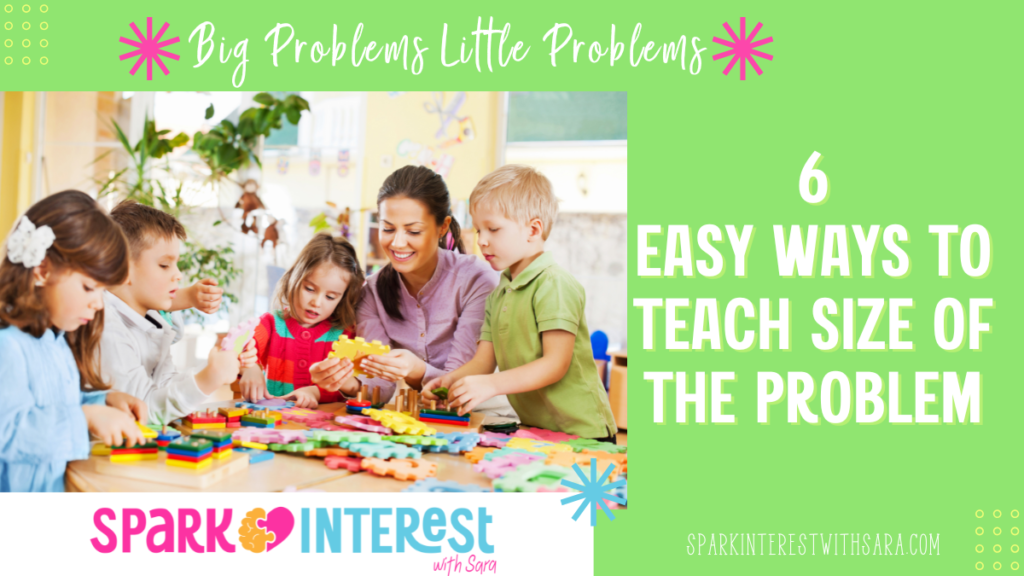Size of the problem is a valuable social skills concept that helps children identify the severity of a problem and decide how to respond appropriately. It teaches that not all problems are the same—think of a broken pencil versus falling from monkey bars and breaking an arm. Both are problems, but their consequences, and the appropriate reactions, differ vastly.
If you’re wondering how to help your preschoolers understand the size of the problem, keep reading!

Before we take a look at these big problem little problem activities, have you downloaded my free Size of the problem vs Reaction Game? This was created as a fun game to reinforce the idea that our reactions should differ according to severity of a problem.
Click on the image to grab it today!
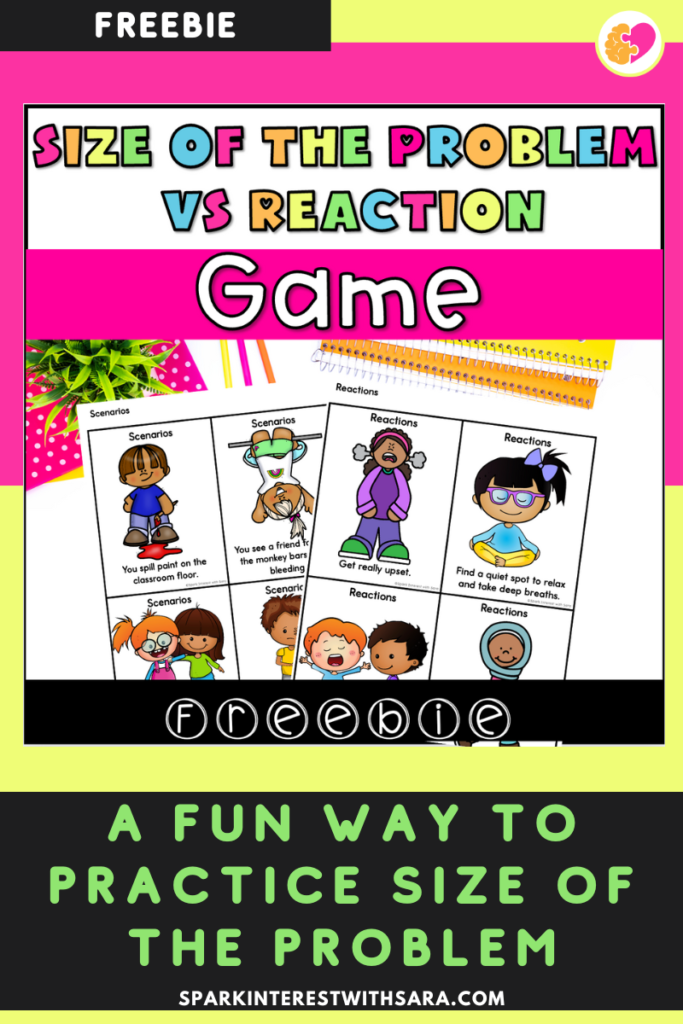
What is the size of the problem?
The size of the problem concept helps students assess the severity of a problem, guiding them to respond appropriately.
Big problems are serious, needing help from adults or professionals and often causing significant emotional responses.
Medium problems might require some assistance and provoke moderate reactions.
Small problems can often be handled independently or with minimal help.
Why is it important to teach the size of the problem?
I want you to imagine 20 preschoolers all busily walking around the classroom, playing with blocks, in the home corner, completing a painting or reading books in the book area. All at the same moment, they all stop and come running up to you with a problem. Their paint spilled, Jimmy took their doll away, and they hit their head on the bookshelf.
You know that this can easily be an average day in our preschool classrooms! Teaching students to determine the problem’s size can help reduce the need for you to manage every single problem in the classroom!
Our young learners really need to learn that not all problems are the same, so our reactions and strategies to deal with those problems will vary accordingly. Once you identify the size of the problem, it helps with emotional regulation and helps with problem-solving too.
It’s important to give students the common language needed to describe their problems and reactions and help them identify solutions.
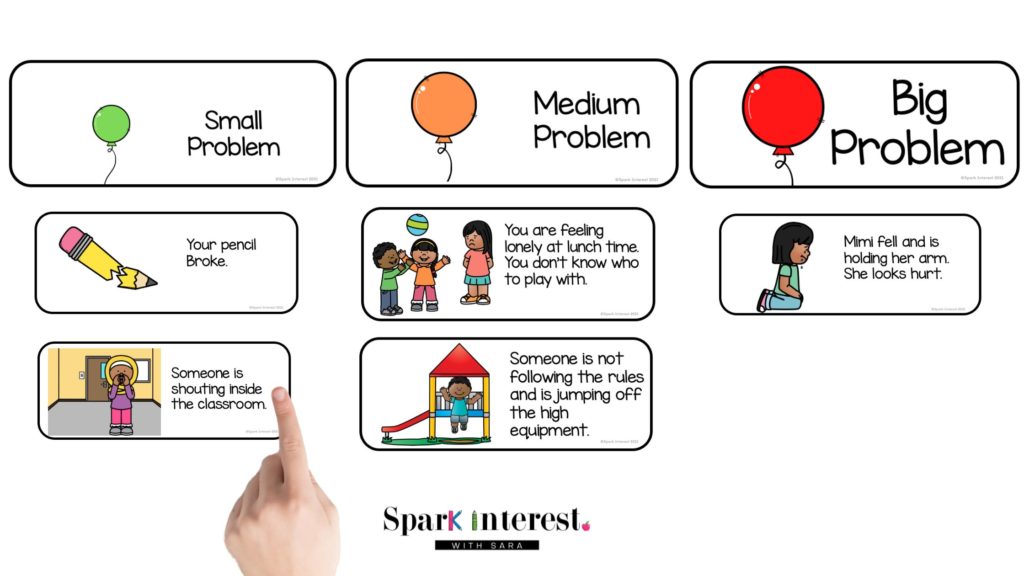
What are small problems for preschoolers?
When we talk about small problems with preschoolers, we normally let them know that these are problems they can solve on their own. Also, they often result in only a small reaction or absolutely no reaction at all.
Some examples of small problems are:
- Not getting to stand in the front of the line.
- Breaking a pencil or crayon.
- Someone bumping into the child while at their cubbies.
These activities may upset the student, but they can deal with them appropriately, and the emotion may show up for a short time or not at all.
What are medium problems for preschoolers?
Medium problems require the student to think and may require help from others like a parent or a teacher. There is often some sort of reaction like crying, whining, or using words to show emotion like “ouch.”
Some examples of medium problems are:
- Spilling their water or milk
- Forgetting homework or project at home.
- Having a headache.
- Getting into an argument with a friend or classmate.
What are big problems for preschoolers?
Big problems are serious events that require help from many people and this may include doctors, police, firefighters, teachers, etc. Big problems often have big reactions like screaming, crying, running away, hiding, etc.
Some examples of big problems are:
- Being really sick.
- Breaking a bone.
- Getting into an accident.
- Losing a loved one.
Depending on the size of the problem, students can use a variety of different coping skills. There are many to choose from, and you want to work with the student to determine which skills can help them in certain situations.
I’ve helped my students through many different size of problem scenarios, and I’ve gathered a few of my favorite calm down techniques over the years. I have found it helpful to teach different calm down techniques throughout the school year and integrate them into our day so that they may have a repertoire of techniques to choose from when they need it.
Techniques that I have found useful are:
- Deep breathing exercises
- Writing or drawing about problem
- Positive self-talk
- Meditation & mindfulness practices
- Listening to or moving to calming music
- Taking mindfulness walks
- Sitting with a calming jar
Calm down techniques can help students with self-regulation and encourage them to find ways to deal with their emotions in a helpful way.
6 Easy Ways to Teach Size of the Problem in Your Preschool Classroom
There are plenty of simple ways to teach size of the problem to preschoolers, which will help them not only in your classroom but also in life.
1. Size of the Problem Visuals
Preschoolers learn through all their senses. One way you can give students a visual representation of this concepts is to use 3 different-sized containers or 3 different-sized balloons to explain how problems come in all different sizes. Fill the containers with colored rice, or blow up the balloons in front of them. Discuss how the less air or less rice means the smaller the problem, and the more rice or air, the bigger the problem.
You could also watch a YouTube video or read a story. There are tons of great options!
YouTube Size of the Problem Videos
Big Problems and Small Problems
Big Problem vs. Little Problem
Size of the Problem Books
Don’t Squeal Unless It’s A Big Deal
You should also take a look at this list of self-regulation books.
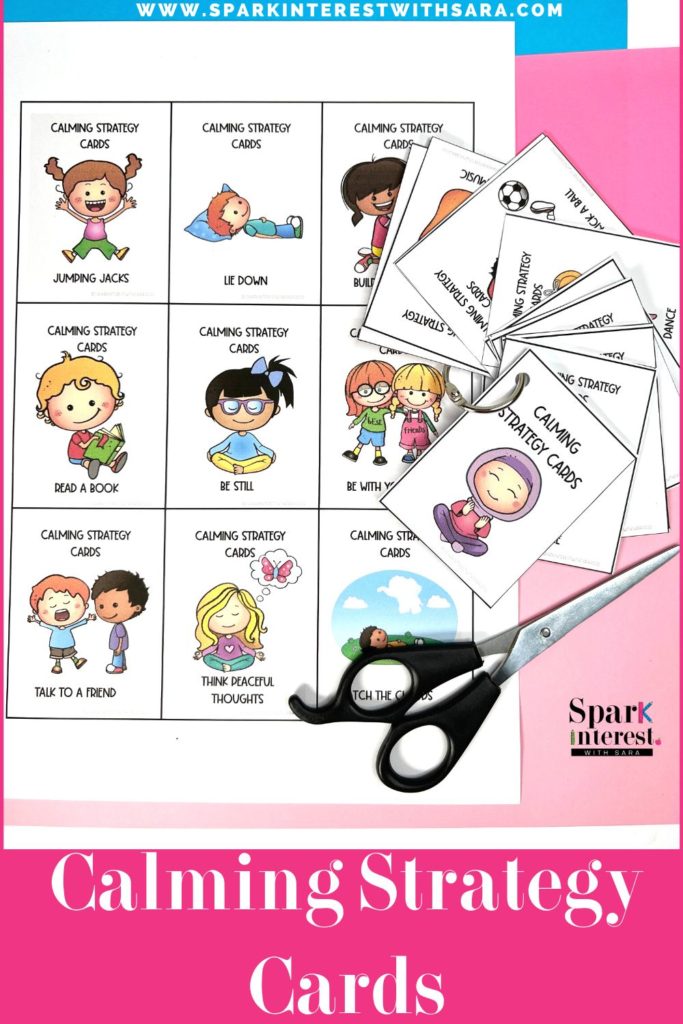
2. Use Social Scenarios
Discussions are some of the best ways to help teach students important skills. Write down common scenarios that may happen in preschool & together as a class, and sort them into the different containers.
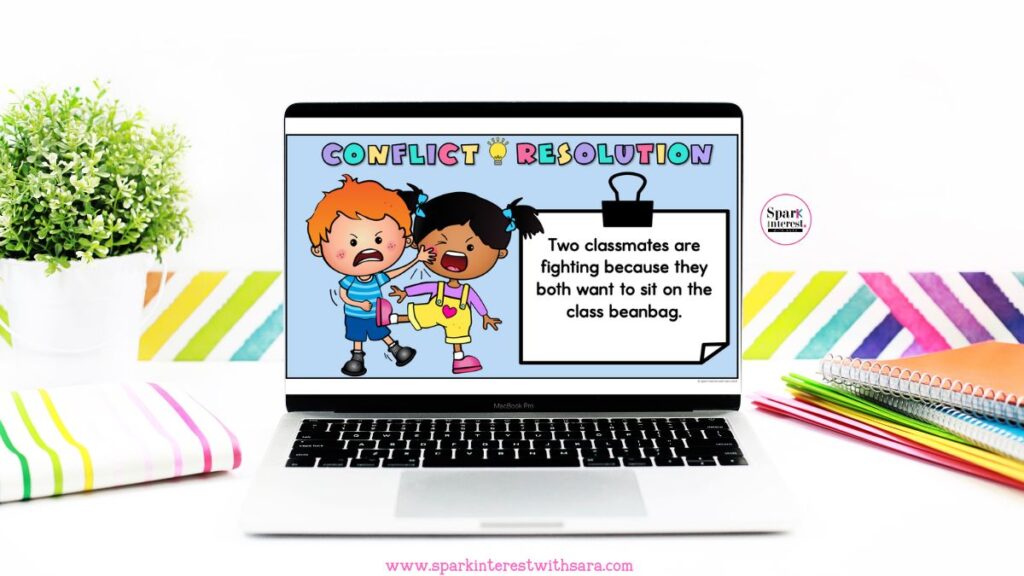
List of common scenarios in preschool:
- Forgot your drink bottle
- You don’t know what you are supposed to be doing.
- Someone pulls your hair.
- Name-calling
- Your shoe lace is untied.
- You miss your Mom.
- Your dog is in hospital.
3. Highlight Possible Reactions
When learning about the size of the problem, you want to ensure you give students the opportunity to talk about how they would react to different situations. Remember, some students will react one way, while others will react differently. Ask your students to think of possible reactions to problems & write them down on the board or slips of paper.
Example: Ask for help, forget about it, take a deep breath, speak to a teacher, cry, etc.
After they have given reactions, put up different scenarios and decide which reaction matches which problem. After that, match the possible scenarios/reactions to the size of problems.
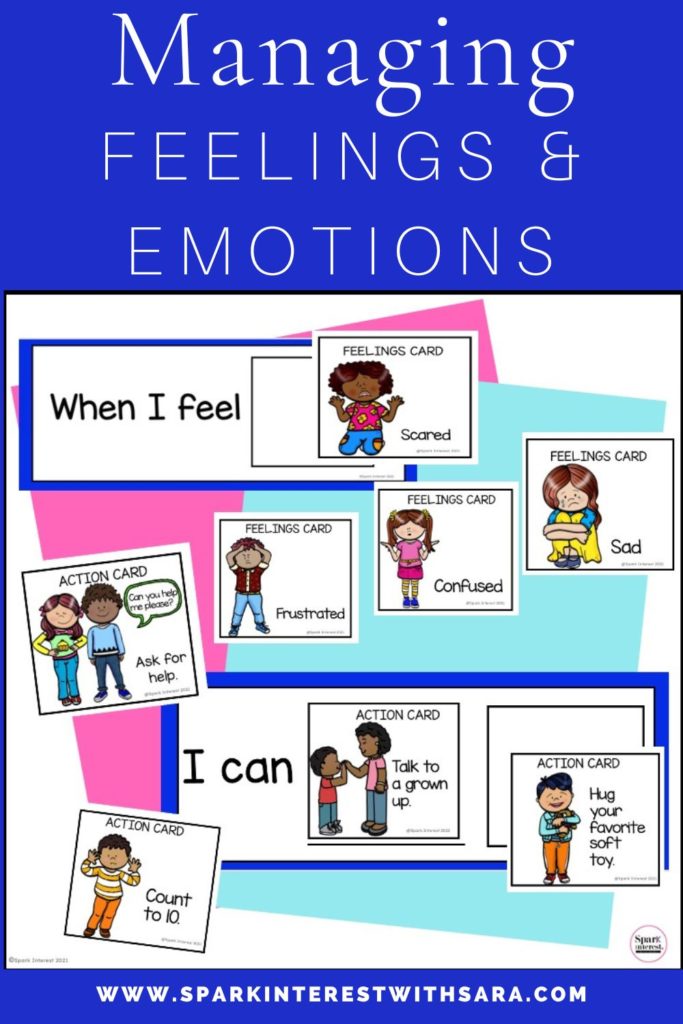
4. Role Playing
Role-playing can be super helpful here, and can also be a lot of fun! Try picking a random problem out of a hat & pick a random reactions out of a hat. Example: You lose a pencil, and your reaction is falling on the floor, crying hysterically. Now role-play it, you’ll surely get a laugh, and it will start a wonderful conversation about the types of reactions each problem should have.
You can also Role-play a problem. Once you (or students) act out different problems, discuss with students – What is the problem? What is the size of the problem? Possible ways to deal with the problem.
5. Reinforce Learning
After you and your students have learned about the problem’s size, practiced, and discussed it. You want to ensure you are constantly reinforcing their learning.
Some ways you can easily reinforce learning are to:
- Display the size of the problem poster(s) so students can see it and be reminded.
- Use worksheets
- Spend time with your students, observing and supporting them in their day. Discuss what you see at the end of day group time.
- Use the language introduced (small, medium, big problem, etc.) and make it part of your classroom language and culture.
- Send a note home to families. Provide a common shared language around the size of the problem.
6. Use a Problem Size Thermometer
Introduce a visual tool like a “problem size thermometer” to help preschoolers gauge the severity of a problem. Create a large thermometer chart with sections labeled “Small Problem,” “Medium Problem,” and “Big Problem.”
How to Use It:
- Present different scenarios and ask the students to “measure” the problem by placing it on the thermometer.
- Use color coding (e.g., green for small, yellow for medium, red for big) to make it easy for young learners to visualize.
- Discuss why each problem fits into its respective category.
Example:
- “Your shoelace is untied. Is this a small, medium, or big problem? Let’s put it on the thermometer.”
- “You lost your favorite toy. Where does this go on the thermometer?”
The thermometer not only simplifies the concept but also creates an interactive way for students to assess problem sizes, fostering better understanding and engagement.
Size of the Problem Matters
When teaching the size of the problem, you want to make sure you teach this concept in fun and interactive ways. Remember to continue the learning even after the lessons. Displaying information, practicing the skill, and building that connection to home so that families know how they too can reinforce the concept at home.
Looking to help your students with Managing Feelings and Emotions? Check out these blog posts below:
6 Fun Ways to Teach Size of the Problem
5 Reason Why Teaching Preschoolers to Identify Emotions is so Important
8 Ways to Help Preschoolers Identify Emotions and Manage Them

